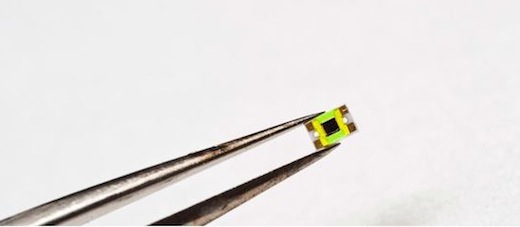
Harvesting solar energy is a great way to generate sustainable power, but unfortunately solar cells are far from being as efficient as they might be. Currently, commercially available solar cells can convert about 25 percent of sunlight into electricity, and scientists have been trying to create better solar cells for years. One milestone they have been unsuccessfully trying to reach is 50 percent conversion efficiency of solar cells. However, the start-up company Semprius might be on the right track with the stacking technique of solar cells they recently developed.
The idea to stack solar cells in order to make them more efficient is not entirely new, but Semprius has managed to make a huge leap forward with it. They have successfully demonstrated that three semiconductor materials can be stacked on top of a fourth solar cell. Such a stacked device is capable of reaching efficiencies of up to 44.1 percent. Furthermore, this stacking technique allows for the reuse of costly crystalline wafers that multijunction solar cells are grown on, which significantly reduces production costs.
The three key innovations of the technique developed by Semprius are a cheap, fast way to stack cells, a proprietary way to electrically connect cells, and a new kind of glue holding the cells together. The design of Semprius’ stacked solar cells utilizes tiny individual solar cells, each of which measures only a millimeter across. This also helps to bring down the costs while improving efficiency.
The company is certain that in three to five years, they will be able to construct solar cells that will consist of two stacked multi-junction devices, which would yield a total of five or six semiconductors. Such a device could actually surpass the magic 50 percent solar cell efficiency point.
Also, such cells would have a manufacturing capacity of 80 to 100 megawatts a year, and solar cells that can achieve 50 percent efficiency could potentially reach costs of five cents per kilowatt-hour. This is less than the current price of natural gas, which costs 6.4 cents per kilowatt-hour.
Related Articles on JetsonGreen.com:
More Environmentally Friendly Solar Cells
Solar Cells Might Soon be Made of Paper
Could Tofu be the Answer to Greener Solar Cells?

Leave a Reply
You must be logged in to post a comment.